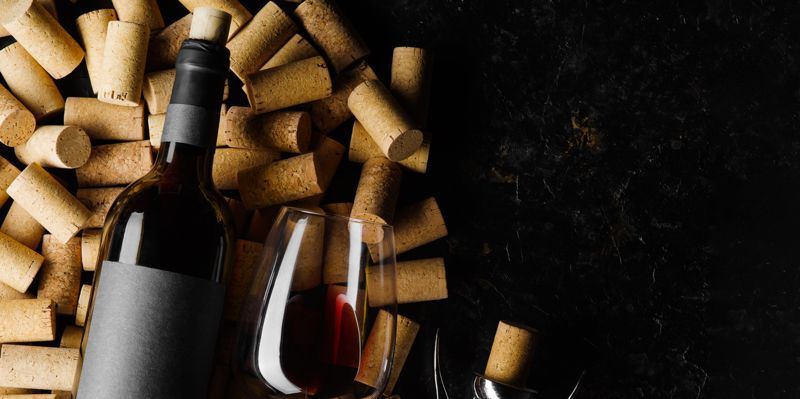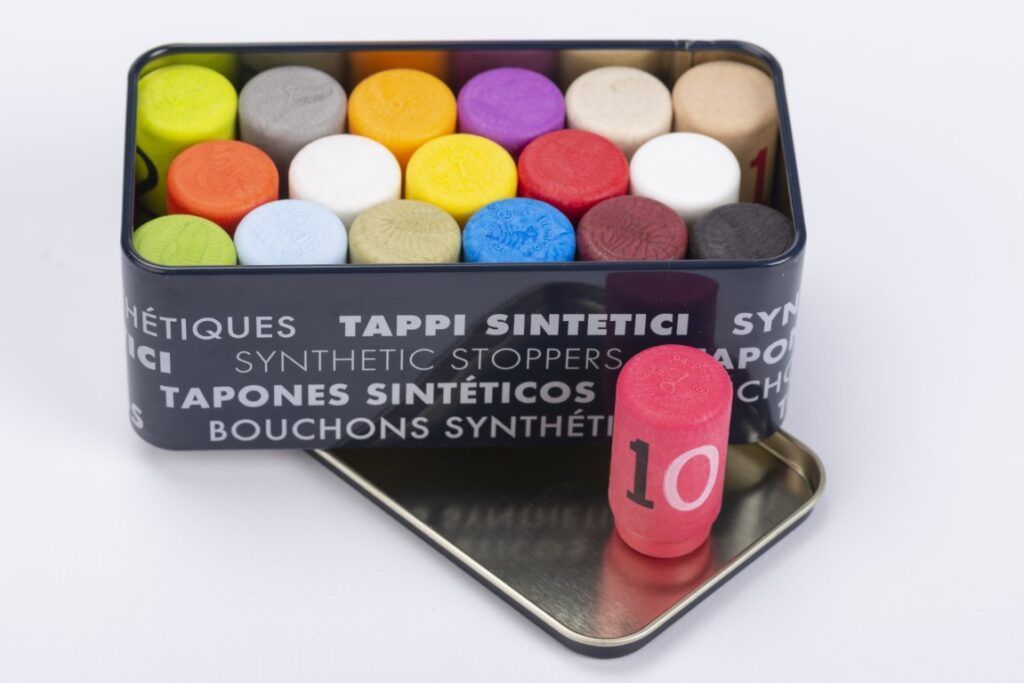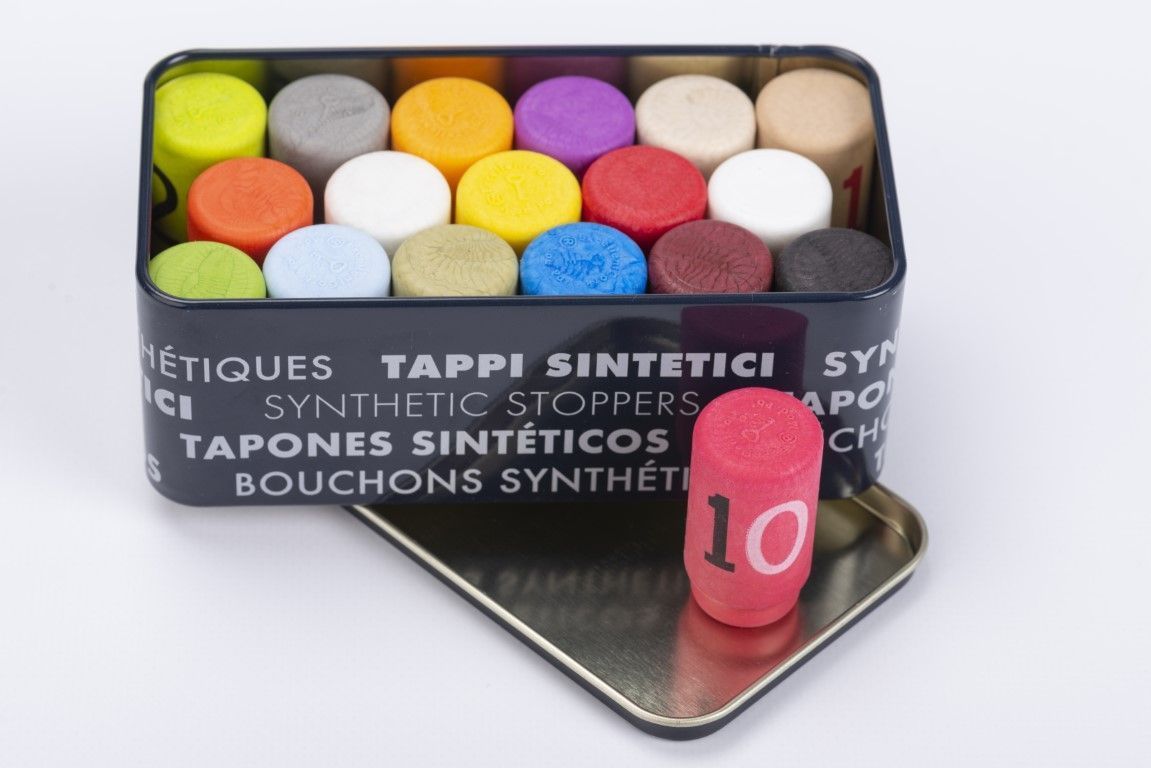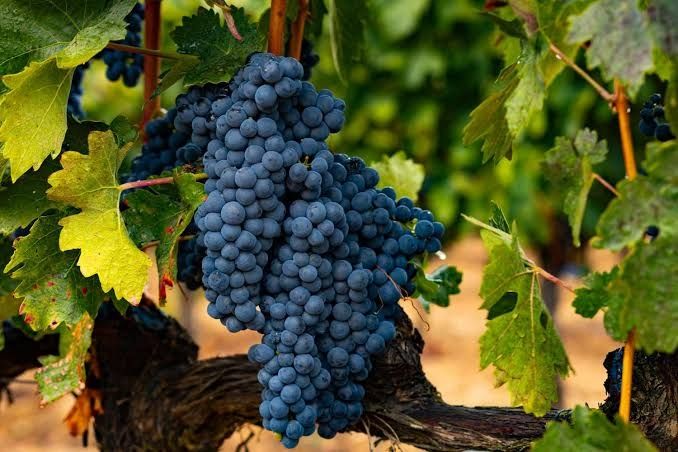The cork stopper plays a crucial role in the preservation and evolution of wine, as it directly influences its aging process and organoleptic characteristics. Traditionally, natural cork has been the most widespread choice due to its ability to allow progressive micro-oxygenation, promoting wine maturation. However, in recent decades, synthetic stoppers have gained relevance in the wine industry, offering a technological alternative with advantages in consistency and cost. Understanding the differences between these two types of stoppers is essential for wine producers, oenologists, and consumers, as the choice impacts the quality and perception of the final product.
What is a natural cork stopper?
- Origin and extraction process of natural cork
Cork is obtained from the bark of the cork oak tree (Quercus suber), native to the Mediterranean basin, especially in countries like Spain, Portugal, and Morocco. Its extraction, known as the “cork harvest”, is a traditional, careful process to avoid damaging the tree. It is performed approximately every nine to twelve years, allowing the bark to regenerate naturally, making cork a sustainable and renewable resource.
Once harvested, the cork undergoes several processing stages: boiling, stabilization, and drying, aimed at improving its physical properties and removing impurities. It is then cut and shaped into different types of stoppers depending on the product’s final use.
- Physical and chemical properties of natural cork
Cork has unique properties that make it ideal for bottle sealing. Its cellular structure is composed of millions of air-filled cells, which provide lightness, elasticity, and impermeability. This allows the stopper to adapt perfectly to the bottleneck, creating an airtight seal that prevents leakage and protects the wine from premature oxidation.
In addition, natural cork allows micro-oxygenation, meaning it enables the controlled passage of small amounts of oxygen into the bottle. This is essential for the wine’s evolution, helping integrate its components and enhancing its aromas and flavors over time. Cork is also resistant to moisture and microbial activity, helping preserve wine quality for years.

What is a synthetic cork stopper?
Materials used in synthetic cork manufacturing
Synthetic corks are made from plastic polymers or biopolymers, designed to mimic the properties of natural cork and offer a more uniform and controlled alternative. Stoppers made from plastic polymers, such as expanded polyethylene, provide a homogeneous structure, reducing the risk of sealing defects and allowing standardized industrial production.
On the other hand, biopolymers, derived from renewable sources like sugarcane or corn starch, represent a more sustainable solution aligned with today’s environmental standards. These materials aim to reduce dependence on petroleum-based plastics and minimize environmental impact.
Evolution and development of synthetic stoppers in the wine industry
Synthetic corks were introduced in the late 20th century as a solution to problems associated with natural cork, especially contamination by TCA (trichloroanisole), a compound responsible for the infamous “cork taint” that can negatively affect the wine. Early synthetic stoppers had low permeability, which created issues with long-term wine preservation and evolution.
With advancements in materials science, synthetic stoppers have greatly improved in terms of flexibility, sealing, and oxygen management. Today, many options offer adjustable permeability, helping control wine aging in a way similar to natural cork. Designs have also evolved to provide easier corkscrew extraction and a better user experience.
Manufacturers such as Excellent Cork, specialists in high-quality synthetic closures, have developed innovative technologies to ensure a balance of performance, sustainability, and wine preservation, positioning themselves as a reliable alternative in the modern wine industry.
If you’re looking for innovative wine closure solutions, Excellent Cork offers a wide range of options designed to preserve quality and enhance the consumer experience. From recyclable to biotech closures, we have the ideal solution for every wine.
Types of natural cork stoppers
- Natural cork stopper: Made from a single piece of cork bark, it is the highest quality and most durable stopper, ideal for aging wines. It allows progressive micro-oxygenation, supporting harmonious wine evolution over time. Commonly used in premium wines for its ability to preserve and enhance complex aromas and flavors.
- Colmated cork stopper: This is a natural cork stopper whose visible pores are filled with cork dust and natural adhesives to reinforce its structure and improve appearance. It’s used for medium-aged wines, offering efficient sealing with lower risk of leakage or spoilage.
- Agglomerated cork stopper: Made from cork granules bound with resins, it’s more economical and less durable. Designed for young wines with a shelf life of under two years. While it provides airtight sealing, it does not offer the same controlled oxygenation as natural cork.
- 1+1 Technical cork stopper: This stopper combines an agglomerated cork body with natural cork discs at both ends, improving sealing and performance. It offers a balance between quality and cost, making it popular for medium-aged wines that require some micro-oxygenation without compromising consistency.
Types of synthetic stoppers
Plastic polymer stopper
The plastic polymer stopper is made from materials like expanded polyethylene, offering a homogeneous and airtight structure that prevents oxygen ingress. Due to its low permeability, it’s recommended for young wines as it limits the wine’s evolution in the bottle. Its main advantage is manufacturing consistency, ensuring uniform quality across all stoppers.
Biopolymer stopper
The biopolymer stopper is made from plant-based materials, such as bio-plastics derived from sugarcane. These stoppers are biodegradable and sustainable, making them an environmentally friendly option. Additionally, their structure mimics natural cork permeability, allowing some oxygenation and making them suitable for medium-aged wines with balanced evolution. Companies like Excellent Cork have developed innovative biopolymer stoppers that combine sustainability, tight sealing, and easy extraction.
Sustainability in the wine industry is a growing commitment. Learn how Excellent Cork supports sustainability through the use of renewable materials and environmentally responsible processes. Discover our green initiatives!
Advantages and disadvantages of natural cork
Advantages:
- Sustainability: Renewable and biodegradable material.
- Micro-oxygenation: Allows proper wine evolution.
- Prestige: Associated with high-quality wines.
Disadvantages:
- TCA: Possible contamination leading to cork taint.
- Variability: Natural inconsistencies can affect performance.
Advantages and disadvantages of synthetic cork
Advantages:
- Uniformity: Consistent manufacturing with no variation.
- No TCA: No risk of cork taint.
- Cost: More affordable than natural cork.
Disadvantages:
- Lower permeability: Not always suitable for aging wines.
- Environmental impact: Depending on the material, they may be less sustainable.
Unsure which stopper best fits your product? Contact our technical team via the Excellent Cork contact page. We’ll help you choose the best solution for your wine, spirits, or sparkling wines.
Impact on wine preservation and aging
The type of stopper affects oxygen exposure. While natural cork allows ideal micro-oxygenation for aging wines, synthetic stoppers—especially plastic polymer ones—offer a more airtight seal, suitable for wines meant for early consumption.
Frequently asked questions about natural and synthetic cork
Can natural cork affect the flavor of the wine?
Yes, if the cork is contaminated with TCA, it can lead to cork taint, altering the wine’s flavor and aroma.
Are synthetic stoppers suitable for long-aging wines?
They are not recommended for long-term aging, as their low permeability limits wine evolution over time.
Which option is more eco-friendly?
Natural cork is the most sustainable, being biodegradable and sourced from a renewable resource. However, biopolymer synthetic stoppers also offer a greener alternative to conventional plastics.
Why do some wines use screw caps instead of cork?
Screw caps are used for wines intended for early consumption as they provide a tight seal and are convenient for consumers.
Does the type of stopper affect the consumer’s perception of wine quality?
Yes, many consumers associate natural cork with higher-quality wines, while synthetic stoppers may be seen as less prestigious.





